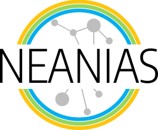Within the framework of WP3, the NEANIAS objectives are to develop and integrate at EOSC three innovative cross-cutting services for tackling operationally atmospheric-related studies and engineering tasks towards engaging several user communities linked to the atmosphere including: meteorologists, industrial air pollutant emitters, ecologists, rural urban planners and air quality authorities, geohazards, civil protection, insurance, health agencies. A variety of sensors deployed in satellites, aerial (manned or unmanned) and terrestrial platforms are currently operationally employed to monitor the atmosphere.
A significant amount of hourly, daily, and weekly 1D, 2D, 3D data that are acquired and generated aim at addressing the critical tasks of monitoring greenhouse gases fluxes, atmospheric perturbations and particulate components especially in active tectonic/volcanic regions as well as air quality. Current practices involve mainly a team of experts from research laboratories with in-house developed algorithms and software (e.g., several implementations of eddy covariance-based calculations exist), step-by-step procedures while no algorithms are standardized and widely acceptable by the scientific and regulatory communities.
An introduction to the innovative services for the Atmospheric environment
The thematic services that NEANIAS proposes considers the following:
- A1- The Greenhouse Gases Flux Density Monitoring service will deliver an operational workflow for estimating flux density and fluxes of gases, aerosol, energy from data obtained from specifically set meteorological stations, validated towards standardized, regularized processes. The objective is to further optimize, automate and validate the existing software for flux density and fluxes estimations of gases, aerosol and energy from data obtained from specifically set meteorological stations, in order to integrate it as a novel cutting-edge service in EOSC. In particular, the front-end of the service will consist of a simple, user-friendly interface that will accept the data and guide the user in obtaining the desired flux densities, and energy balance results. It will be possible to upload the data by the user from his/her own database or from an EOSC database or from a linked to EOSC database. The user interface will efficiently demonstrate examples with several different challenging datasets which will target different user communities (national greenhouse gas emissions data validation, urban air quality authorities, meteorological services, and energy and power generating sector). The back-end of the service will consist of an orchestrator that will select the optimal method or combination of methods, for processing, depending on the available dataset. Two major micrometeorological pathways will be considered and integrated based on the aerodynamic gradient method and on the principle and application of the eddy covariance method.
- A2- The Atmospheric Perturbations and Components Monitoring service will perform all required analytics of atmospheric and meteorological data in order to estimate possible correlations of gaseous and particulate components of the atmosphere with earthquake and volcanic processes. The objective here is to further optimize and validate the existing data from specifically set of meteorological stations in order to determine possible correlations of gaseous and particulate components of the atmosphere with earthquake and volcanic processes. For seismic processes, the correlation will be established by quantifying the variation of a specific gas (i.e. radon) and particulate matter in the lowermost atmosphere before, during and after an earthquake event. This will offer a cutting-edge service to the international fundamental requirement and discussion on the importance and reliability of such gas/particulate variations as earthquake precursors phenomena. Regarding the volcanic processes, it is of paramount importance to quantify the input of magma-derived products in the atmosphere in the form of gases and ashes. In particular, the front-end of the service will consist of a simple, user-friendly interface that will accept the data and guide the user in obtaining the desired correlations of atmospheric components with the meteorological parameters.
- A3- The Air Quality Estimation, Monitoring and Forecasting service will deliver a novel cloud-based solution providing crucial information and products to a variety of stakeholder in agriculture, urban/ city authorities, health, insurance agencies and relative governmental authorities. This new EOSC service will be delivered by further optimizing, automating and validating existing software modules for air quality estimation along with the novel integration of satellite, geospatial and in-situ data. The user interface will efficiently demonstrate examples with several different challenging datasets which will target different user communities (urban air quality authorities, meteorological services, energy and power generating sector, and industrial air pollutant emitters) The examples will also demonstrate to the user the attractiveness of the package and its ease of use and also how it can be used, not only, to improve urban planning, strategy and interaction with the city residents but also can be integrated with data from other urban environment areas (for instance, mobility) and provide different functions, such as alarms management, risks and emergency situations detection, geo-referencing data, statistical analysis and life quality reports.
Business opportunities and potential beneficiaries
In the novel A1 service, although algorithms may be commercially available, no algorithms are standardized and widely accepted by the scientific and regulatory communities, raising a significant business opportunity since A1 allows currently missing regularization perspectives. The novel A2 service will engage geohazard scientific and government public protection authorities towards delivering timely alerts on forecasting geohazards activities. For seismic/volcanic hazards, several exploitation opportunities will be raised, also from providing to stakeholders the crucial information of how gas and particulate concentrations change in space and time. The innovative A3 service will engage users and leverage business exploitation opportunities in (i) agriculture since air quality influences the agricultural productivity (ii) urban-related studies including planning, land use, and real-estate (iii) in insurance/ health since e.g. preventive measures in hospitals/ pharmacies can respond to citizens’ needs.
